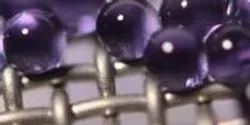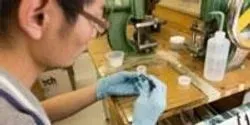carbon

Using the same baking soda found in most grocery stores, Lawrence Livermore National Laboratory scientists, along with colleagues from Harvard University and the University of Illinois at Urbana-Champaign, have created a significant advance in carbon dioxide capture.

The Taj Mahal’s iconic marble dome and soaring minarets require regular cleaning to maintain their dazzling appearance, and scientists now know why. Researchers from the United States and India are pointing the finger at airborne carbon particles and dust for giving the gleaming white landmark a brownish cast.

A Johns Hopkins University-led team links new organic carbon species in deep fluids to the formation of diamonds — and life itself.

There is no disputing graphene is strong. But new research by Rice University and the Georgia Institute of Technology should prompt manufacturers to look a little deeper as they consider the miracle material for applications.














